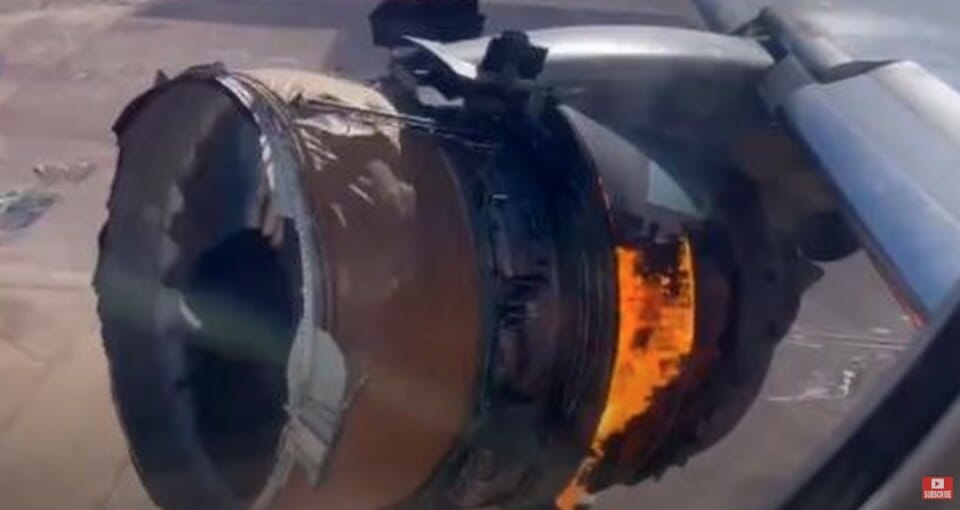Here is an update on the United Airlines flight 328 departing Denver (DEN) for Honolulu (HNL) on February 20, 2021. The aircraft, a Boeing 777-200 had just departed from DEN runway 25 on a westbound flight path when the incident occurred. The aircraft suffered an explosion in the right hand (number 2) engine at about 12,000 feet. This post will cover the initial inspection of the aircraft and probable cause.
The Aircraft
The aircraft involved in this mishap is a Boeing 777-222:
- Aircraft delivered to United on November 19, 1994,
- Aircraft registration number: N772UA
- Aircraft manufacturers serial number: 26930,
- Aircraft engines X 2: Pratt and Whitney PW4077-112 turbofan engines.
The Flight
On Saturday, February 20, 2021, United Airlines flight 328 departed Denver runway 25 at 1:04 pm MST. During climb out approaching an altitude of 12,000, the number 2 engine suffered an engine event that required the shutdown of that engine. As you can see from the photo above, there was a fire event associated with this engine. At approximately 13,000 feet, the flight crew contacted Denver Departure with a “Mayday” call and request for an immediate turnaround to DEN. The flight crew activated the engine fire suppression system but the fire continued to burn. The fuel to the engine was shut off, the most likely reason for the engine fire was either engine oil or hydraulic fluid that was burning. A fire aboard an aircraft in flight is a “worst-case” type of scenario. Fires that are uncontrolled could enter the fuselage consuming oxygen while emitting toxic smoke. The fire could also destroy electrical wiring and control cables.
With the engine cowling (cover) blown off and the fan disk rotating in the wind (windmilling) the aircraft would continue to fly but not in a normal manner. Besides the performance and handling challenges, there were fire and vibration issues to contend with. With engine thrust only being produced the left-hand engine, the plane will want to yaw (turn) to the right. The Boeing 777 has an excellent autopilot which has a feature to counteract the unintended yawing motion so the aircraft can be flown under control.
Jet engines are spinning shafts with fan, compressor and exhaust turbine blades. These shafts are perfectly balanced to eliminate vibration. The danger of engine-caused vibrations is that the engine will shake and if bad enough, will separate from the wing. During an engine separation, it could damage the wing adding to additional difficulties that could affect controlled flight.
The flight reached a maximum altitude of 13,450 and a top speed of 383 mph. The aircraft began the return to DEN to land on runway 26.
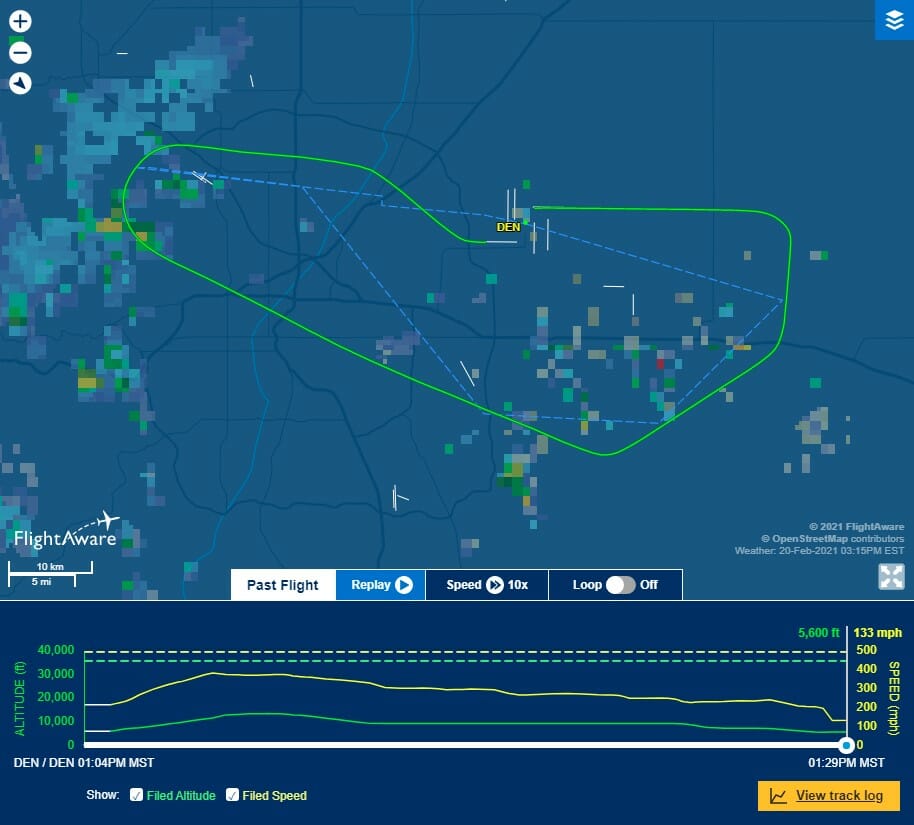
Departing from DEN to the west takes the aircraft directly to the Rocky Mountains. The sectional chart below shows that the minimum safe clearance altitude to clear the mountains is 14,600 feet (circled on the chart below). Making the immediate decision to return to DEN before encountering was the right call. The sectional chart also shows the town of Broomfield, CO (circled) where the engine parts landed. The flight landed without incident at 1:29 pm MST after flying just 119 miles.
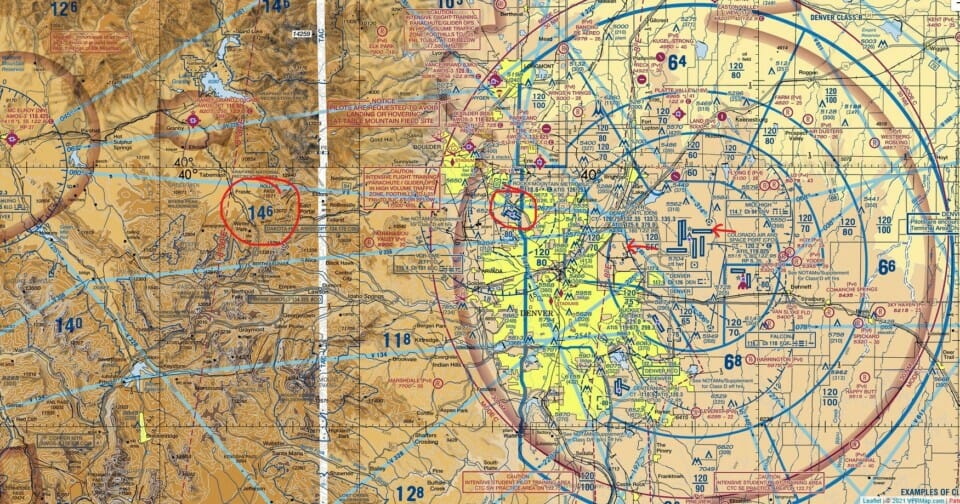
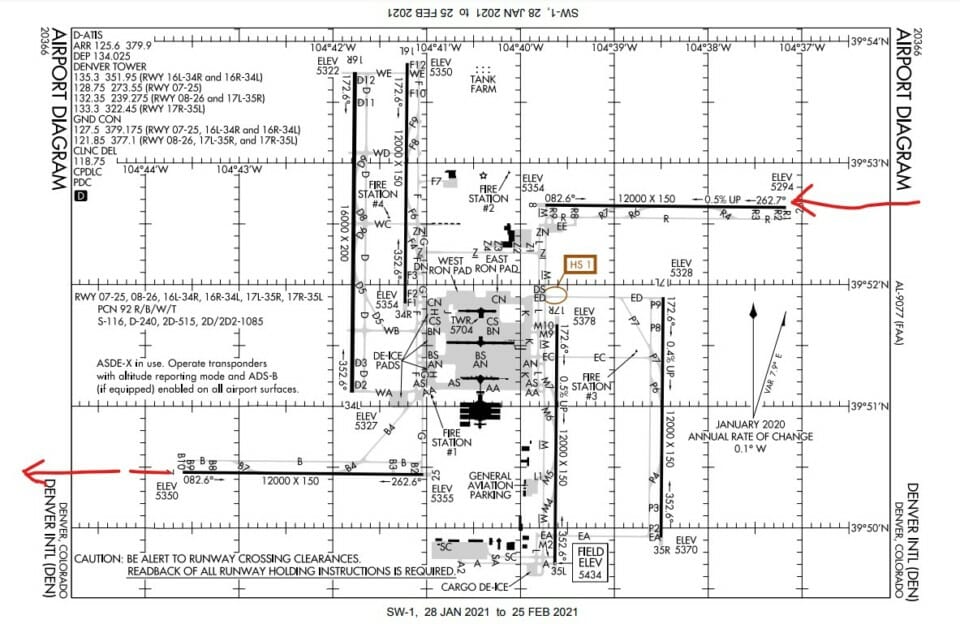
The Flight Crew
The flight crew did a perfect job of handling the situation. When you have two pilots, one pilot is flying the aircraft and the other pilot is monitoring the flight. This flight crew determined just before approaching the Rocky Mountains that they needed to turn back to DEN. The captain contacted DEN departure controllers declaring a “mayday” situation. The controller stayed with flight 328 and worked with the flight crew on a manageable approach for landing. At this time, the first officer is the pilot flying and handled the radio communications while the captain was the pilot monitoring. The captain is calculating landing data including landing weight, souls (people) onboard fuel quantity and emergency checklist callouts.
Flying an aircraft consists of three parts:
- Aviate,
- Navigate and
- Communicate.
besides those three factors, the flight crew has to maintain situational awareness and crew resource management. Situational awareness is the sense of knowing what is going on around you and being able to respond correctly when needed. Crew resource management is when the flying tasks are evenly distributed among the flight crew members so that neither pilot is task saturated. These two factors are taken to a heightened level during an inflight emergency.
During the conversation with Denver approach, the crew communicated their intention to land on runway 26 and request the equipment (fire and rescue trucks) roll to runway 26. The controller gave the flight crew a discreet radio frequency for them to talk with fire/rescue on the ground. This was critical because fire/rescue determined that the fire could be extinguished quickly without evacuating the aircraft at the end of the runway. The captain informed the “A” position flight attendant that he would decide if an emergency evacuation was necessary. By not doing an emergency evacuation using the evacuation slides, injuries were prevented that are common during these evacuations.
The aircraft was towed from the active runway.
Video Of The Preliminary Engine Inspection
Juan Browne talks us through the preliminary engine inspection and facts about the emergency landing. Juan is a Boeing 777 pilot and aviation expert. Here is his take:
The Engine Inspection
The Pratt and Whitney PW4077-112 turbofan engines have a fan diameter of 112 inches. The fan blades are hollow, about four feet long and made of titanium. These blades weigh 34 pounds each and spin at about 4,000 RPM. The problem with fan blades, if they suffer from metal fatigue, they tend to crack from the inside of the blade and work their way to the outside. The large blades in the front of the engine are the fan blades.
During the initial inspection yesterday, it was determined that one fan blade completely separated from the engine, breaking an adjacent blade in half. The blade that failed completely ripped the front engine ring when it was ejected from the engine. Ultimately, the engine will be removed and disassembled for a complete metallurgical inspection.
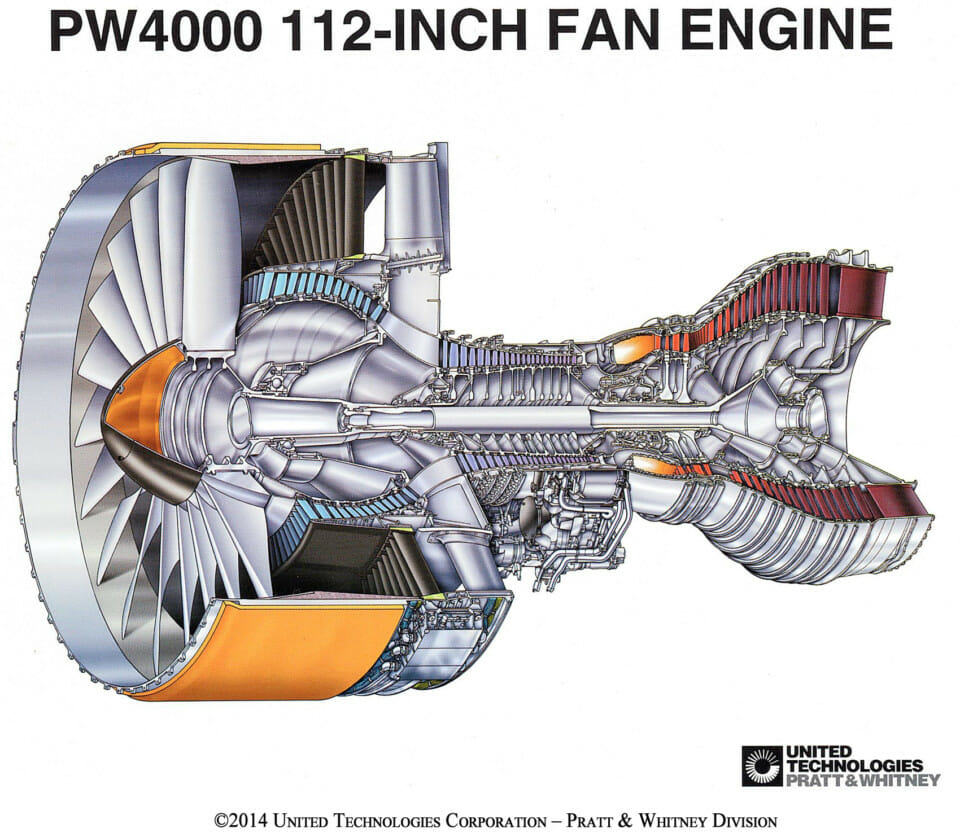
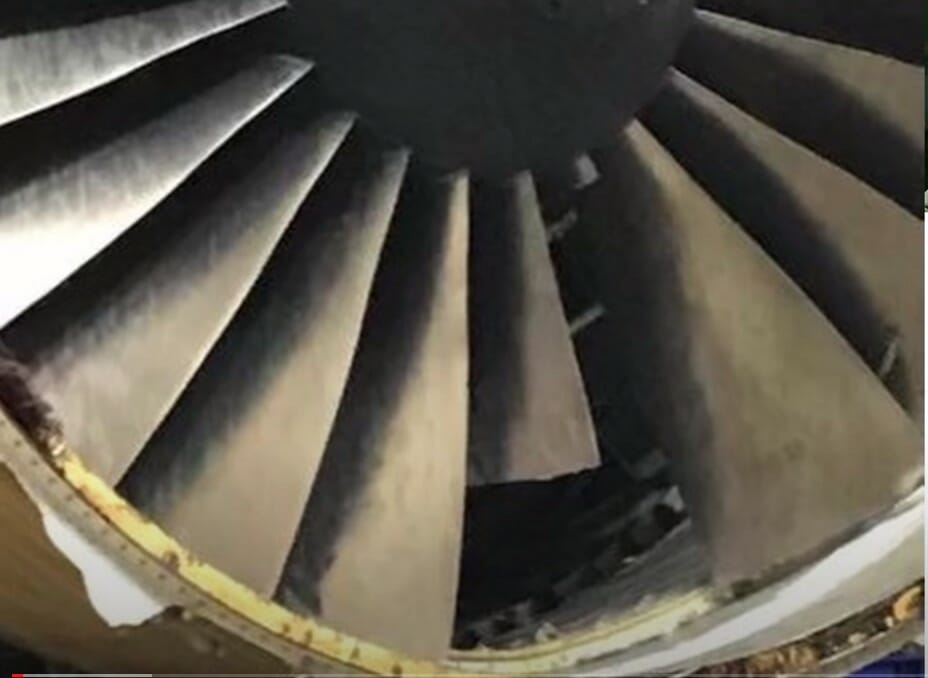
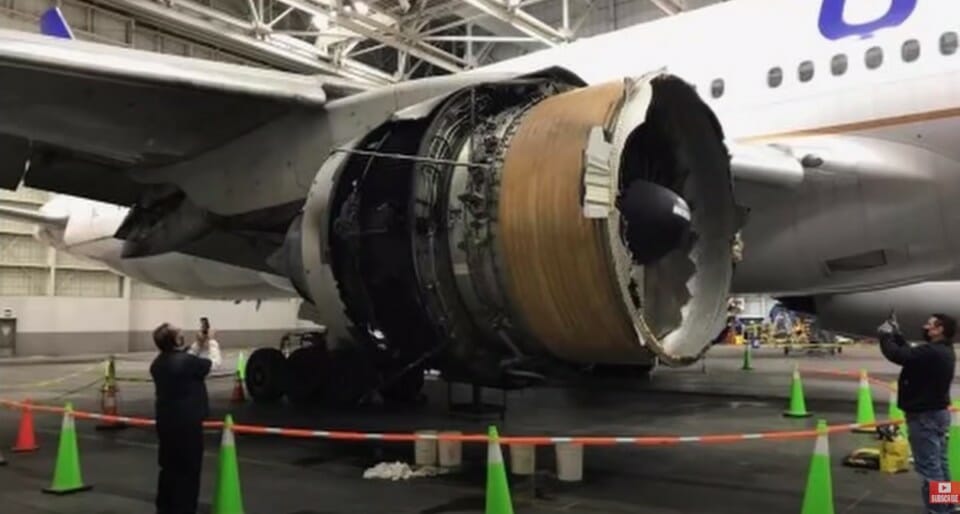
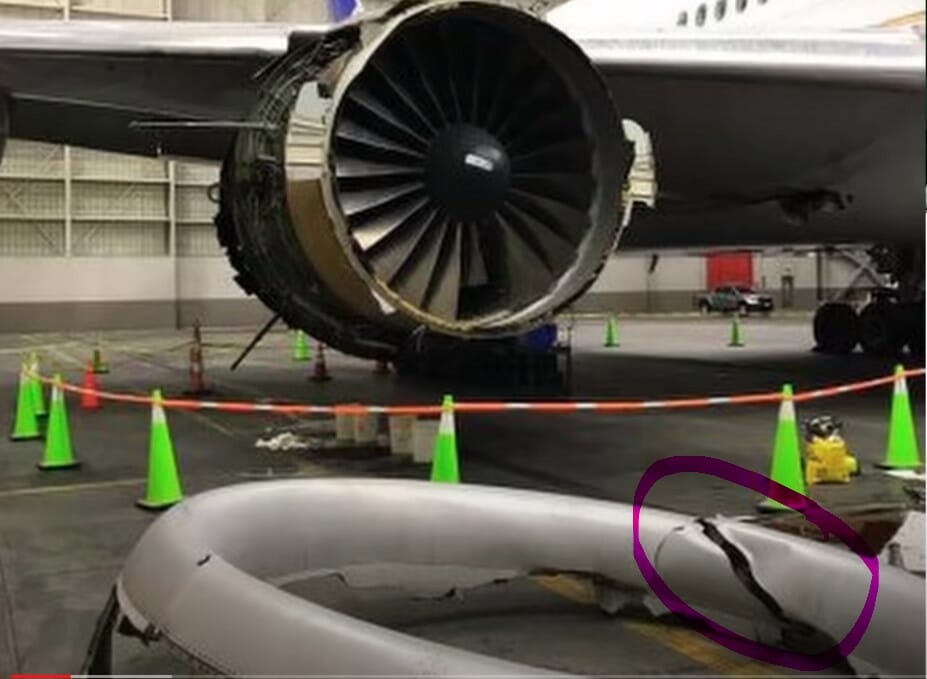
Engine failures are defined as contained or uncontained. When engine debris leaves the engine, it is an uncontained engine failure. There appears to be a tear in the rear of the fuselage possibly from a fan blade strike. If this is the case, UA 328 suffered an uncontained engine failure.
As a result of this failure, United Airlines is grounding the balance of their Boeing 777 fleet that is still flying. The other half of their 777 fleet remains parked in storage. Other airlines are expected to follow suit with stepped up engine inspections.
ETOPS Operations
How long is a twin-engine airliner permitted to fly on just one engine? The answer is a performance standard called engine Extended Single Engine Operations or ETOPS. The Boeing 777-200 with the Pratt & Whitney 4000 engine has an ETOPS time of six hours. That doesn’t mean that the plane is allowed to fly for six hours on one engine. The six hours is the maximum duration that is divided in half to three hours. The 777-200 is certified to fly a maximum of three hours on one engine. This would take into account if the aircraft lost an engine halfway to Hawaii. That three-hour mark would determine if the aircraft would have to return back or be able to continue to its destination. ETOPS also establishes required speed and altitude parameters that must be maintained during single-engine operation.
Since the failure occurred during climb out, the decision was clear and immediate to return to DEN.
Final Thoughts
I want to start off by commending both the flight crew and air traffic controllers for an excellent job handling this inflight emergency. The engine failure occurred early in the flight profile before the aircraft had to clear the Rocky Mountains so achieving the safe altitude minimums to clear the mountains was never encountered. The pilots made the correct decision to turn around early which enabled a safe landing without injuries.
I fly search and rescue missions in a Cessna 182. In my years of flying, I have had to declare an inflight emergency when we lost our alternator in IFR flight conditions. Our dedicated air traffic controller from Seattle ATC handled our situation perfectly as we worked out plans for an emergency landing if needed. In closing, I want to give a big thanks to the professional men and women who make the American air traffic control system the best in the world. Without these dedicated people, situations like United flight 328 could have had a different outcome.

